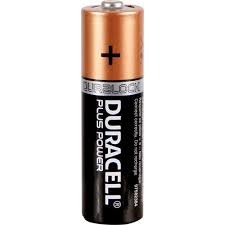First battery brand advertised on TV: Duracell
In 1964, the Duracell brand name was introduced to the public. The word meant "durable cell", emphasizing the longevity of batteries. Here is the Duracell success story:

The birth of the Duracell brand dates back to the early 1920s. Samuel Ruben, a creative scientist living in New York who managed to obtain more than 300 patents, focused his studies on dry electrolytic aluminum capacitor, vacuum tube, mercury cell and alkaline batteries. He needed tungsten filament wire to use in an experiment. Contacted Mallory company to procure this part. The company's founder, Philip Rogers Mallory, was very impressed with Ruben's work and believed it would make a great contribution to his production power. Upon this, the foundations of Duracell International were laid with the cooperation of Mallory and Ruben.
Samuel Ruben (1900-1988)
Ruben's work brought about very important transformations in the field of electrochemistry. Although his inventions are not well known by the public, he began to take part in many electronic products that are frequently used in daily life. The dry electrolytic capacitor he developed has been used in almost all radios and televisions and many electric motors for many years. Batteries used in products such as compact battery electronic clocks, earth satellites and hazard signal transmitters in airplanes have inspired new inventions in the field of electrochemistry. This talented inventor, who did not have a university degree, was awarded many academic awards for his experiments and inventions, and gave lectures at different institutions.
The new generation alkaline batteries developed by Ruben at Mallory were specially produced for Kodak cameras with built-in flash and offered for sale under the Mallory brand. Since these batteries have high energy consumption, they attracted great attention and started to be used in other electronic devices. In 1964, the Duracell brand name was introduced to the public. The word meant "durable cell", emphasizing the longevity of batteries. These batteries, which became part of the Apollo 11 program in 1969, became the first batteries to be used on the Moon. However, the use of the Mallory brand name continued until the 1980s.
In the 1970s, the company expanded its product range to suit the consumer electronics industry's alkaline battery needs. With this expansion, the brand strengthened its image and increased its recognition. With the effect of large investments made in the field of R&D, it managed to become a world brand in battery technologies. Duracell's batteries, which made many innovations such as the first alkaline AA, AAA, C, D, 9V batteries, and the first hearing aid button battery, started to be used in many products from recording devices to handheld radios and motorized toys.
In 1971, copper and black colors were introduced to symbolize the strength and superiority of their products and to make them easier to distinguish. These products, which are more compact and efficient compared to other batteries on the market, have come to the fore in a short time. Duracell, which was also the first battery brand to be advertised on television, emphasized longevity and reliability in its advertisements.
In 1973, the company introduced its brand icon, the Duracell Bunny, to the public. This cute rabbit, which reflects Duracell's battery power, enabled the products to be introduced to wider masses with the spread of television. Sometimes as a skier, sometimes as a brilliant football player, sometimes as a racer who completed the marathon without any problems, this cute rabbit became an icon that strengthens the brand's image. Thanks to these ads, which have been watched millions of times in the intervening 45 years, the company has managed to engrave the slogan "10 times more durable than ordinary batteries" about its products.
However, towards the end of the 1970s, the company's production capacity greatly increased, which turned into a serious problem. Due to increasing economic problems, the company was sold to Dart Industries in 1978. It merged with Kraft 2 years later. It changed hands again in 1988 and was bought by Kravis Roberts. The company, which went public shortly after, changed hands once again in 1996 and was acquired by Gillette. In all these changes, the company's market power has steadily increased and its leading position in the sector has been consolidated.
In 2005, Duracell changed hands once again and joined the P&G family. In 2011, it launched a new venture to develop wireless chargers for mobile phones and small electronics. In 2013, it launched Quantum, a new high-performance product line. The company changed hands once again in 2016 and passed under the management of Berkshire Hathaway.

